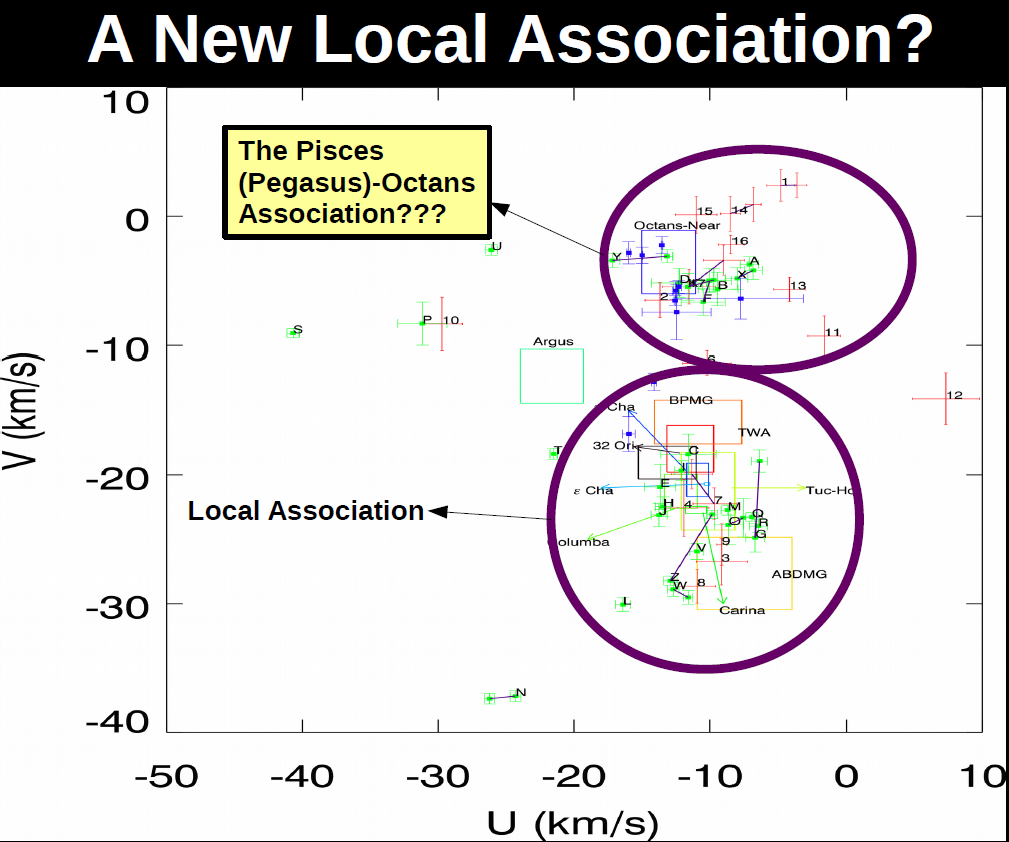Understanding the properties of young stars near the Sun is extremely important to facilitate a complete theory of star formation, understand the local rate of star formation and identify the processes responsible in the dispersal of young star clusters. The locality of such objects make them the prime targets for direct imaging studies for brown-dwarfs, disks and planetary systems, at a crucial evolutionary stages where planetary systems are forming.
Thanks to large efforts and vast improvements in observational data, astronomers have identified several thousands of young (<100 Myr) stars in the Solar neighbourhood (within ~100 pc), most of which have been identified as constituents of moving groups (MGs): low-density, gravitationally-unbound, but kinematically coherent stellar ensembles that are approximately co-eval. MGs are thought to be the link between dense star clusters and the sparse Galactic field, however, their dynamical origins remain largely unknown, with some evidence suggesting some MG members may not have formed in the same star forming region.
Recent evidence is emerging that a considerable number of young, nearby stars are not kinematically linked with any of the approximately dozen known MGs. Motivated by these findings I lead an investigation to quantify, for the first time, the fraction of young stars near the Sun that do not belong to any known MGs. The method is to collect data from kinematically-unbiased all-sky surveys that identified young stars by the prescence of their large amounts of surface lithium, a particularly reliable stellar youth indicator for Solar-type and low-mass stars. A sample of 225 stars were compiled that are likely as young as 125 Myr, have at least one radial velocity measurement and have precise astrometric data from Gaia DR2.
Galactic space velocities are calculated, revealing that at least half of the sample are not co-moving with any known MGs linked with any known nearby MGs and 20% of this population are several 10s of km/s from their nearest MG in velocity space (see Figure, top). Intriguingly, an investigation into the demographics of these objects shows that the kinematically-hot sample are systematically older than the MG sample (see Figure, bottom).
Their origins are a mystery. Could they belong to very small kinematic groups, or larger kinematic entities yet to be identified? Are they the dynamical ejectees of more distant SFRs from processes such as supernovae explosion or strong 3-body interactions? Or are they the remnants of the high velocity tails in molecular clouds? The only way to really find this out is by tracing their Galactic orbits backwards in time to their birth and locate the star forming region from which they were born. This requires extremely precise radial velocity measurements, and I plan to acquire these in the near-future to understand the origins of these peculiar, kinematically-hot stars.

Grey boxes denote the 1-sigma velocity dispersions from the nearby, known MGs. Blue objects have kinematic links to at least 1 MG and red objects have no kinematic links to any MG. A dozen or so objects have space velocities several 10s of km/s from the centroid of their MG and represent some of the fastest stars in the Galactic plane.








